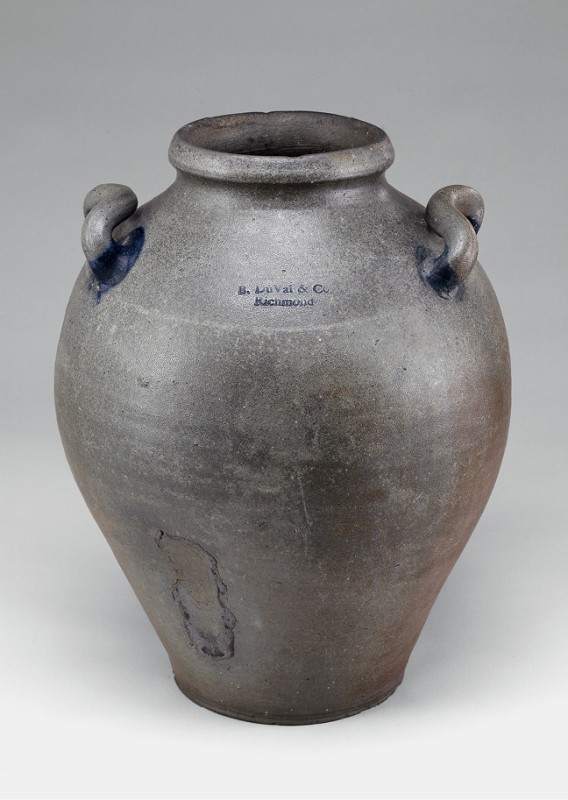
Storage jar, Benjamin DuVal & Co., Richmond, Virginia, 1811–1817. Salt-glazed stoneware. H. 15 1/2". (Courtesy, Museum of Early Southern Decorative Arts.) This three-gallon ovoid jar displays the impressed mark “B. DuVal & Co / Richmond.”

Jar and jug fragments with impressed marks, Benjamin DuVal & Co., Richmond, Virginia, 1811–1817. Salt-glazed stoneware. (Virginia Department of Historic Resources; photo, Gavin Ashworth.) Out of the thousands of fragments collected during the DuVal salvage recovery, fewer than a dozen had impressed marks. The historical documentation suggests that the “B. DuVal & Co / Richmond” mark was used from 1811 until 1817, when Benjamin DuVal’s son James took over the operation of the pottery.
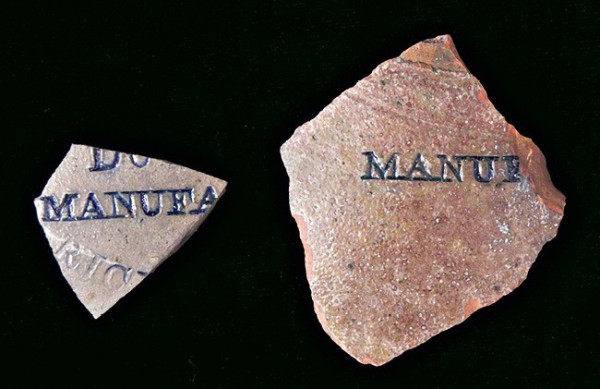
Jar or jug fragments with impressed marks, James DuVal, Richmond Stoneware Manufactory, Richmond, Virginia, 1817–1818. Salt‑glazed stoneware. (Virginia Department of Historic Resources; photo, Robert Hunter.) These marks were recovered in the 2002 salvage project and were attributed to James DuVal’s tenure of the stoneware manufactory after he took it over from his father in 1817. The fragment on the right suggests that the stamps used to create the marks were modular so the different lines could be applied independently.

Jug, James DuVal, DuVal’s Manufactory, Richmond, Virginia, 1817–1820. Salt-glazed stoneware. H. 17 1/2". Mark, impressed on shoulder: DUVAL’S / MANUFACTORY / RICHMOND, VA. (Courtesy, William C. and Susan S. Mariner Private Foundation; photo, Robert Hunter.)
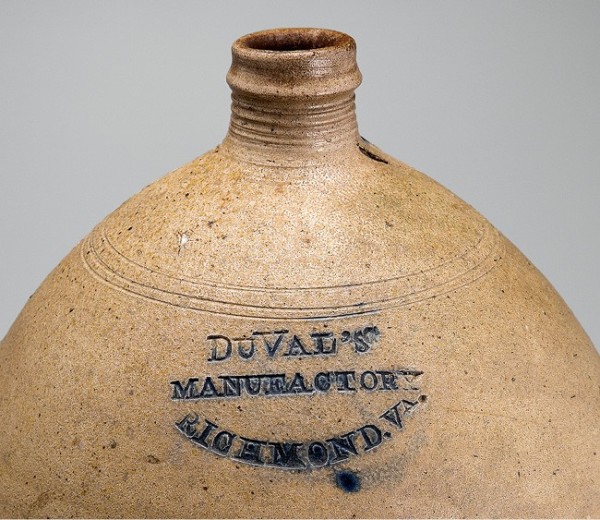
Detail of the jug illustrated in fig. 4. The impressed mark reads: DUVAL’S / MANUFACTORY / RICHMOND, VA. Note the three incised cordons on the shoulder identical to those shown on the woodcut engraving in fig. 7.

Detail of the jug illustrated in fig. 4 with the fragment illustrated in fig. 3 superimposed over the mark.
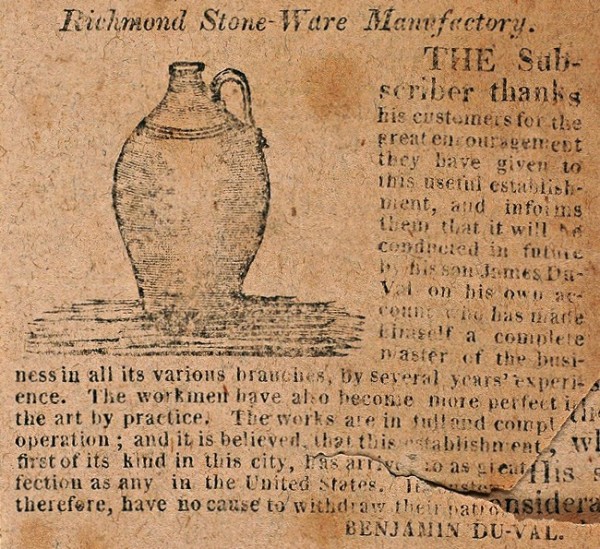
Detail of a newspaper advertisement for the “Richmond Stone-Ware Manufactory,” published in the Richmond Enquirer, May 9, 1817. (Courtesy, Library of Virginia.) Note the depiction of three incised cordons on the shoulder identical to those on the newly discovered jug as seen in figs. 4–6.
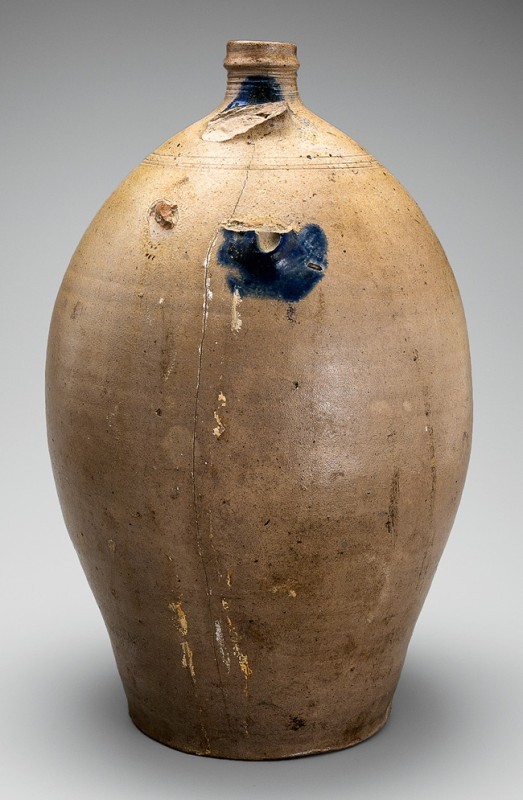
Reverse of the jug illustrated in fig. 4. Note the attachment of the handle to the shoulder and the thumb impression on the lower terminus.

A detail of a Benjamin DuVal jug, Richmond Stoneware Manufactory, Richmond, Virginia, 1811–1817. Impressed: “B. DuVal & Co / Richmond” (Private collection; photo, Gavin Ashworth.) Note the attachment of the handle to the neck/lip of the jug and the lack of a thumb impression on the lower terminus.

Jug fragments, Benjamin DuVal & Co., Richmond, Virginia, 1811–1817. Salt-glazed stoneware.
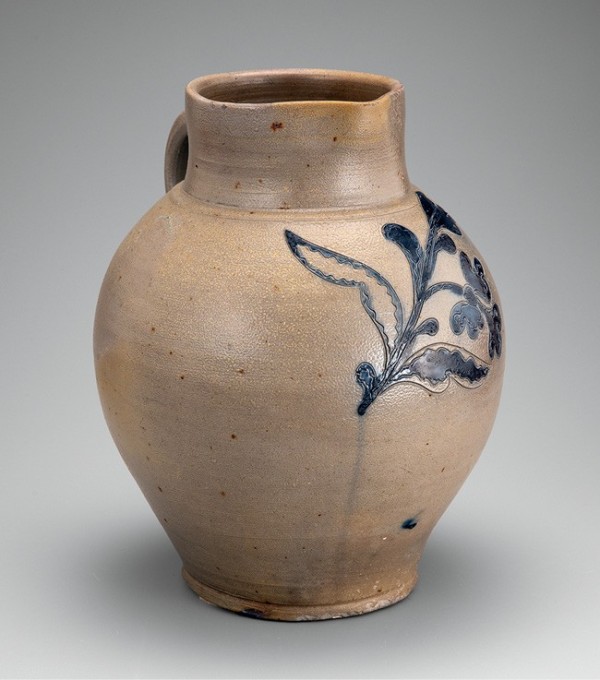
Pitcher, possibly David -Morgan or Crolius Family, Manhattan, New York, ca. 1790–1800. Salt-glazed stoneware. H. 12 3/4". (Private collection; photo, Robert Hunter.)
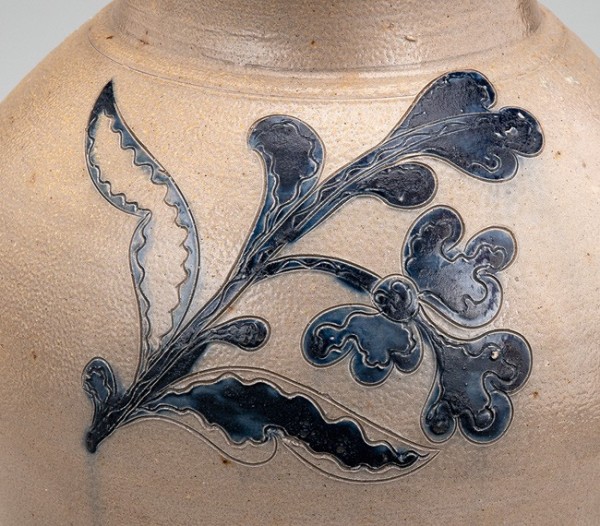
Detail of the incised decoration on the pitcher illustrated in fig. 11.
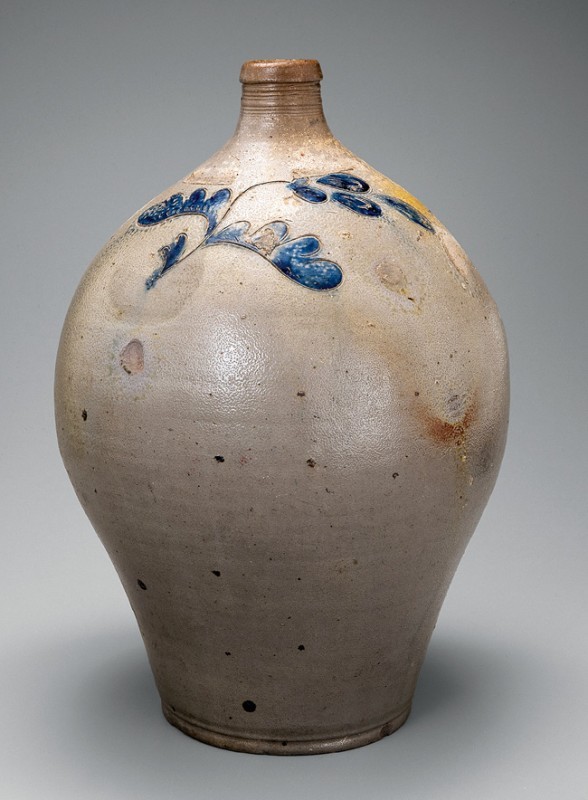
Jug, attributed to Benjamin DuVal, Richmond Stoneware Manufactory, 1811–1817. Salt-glazed stoneware. H. 16". (Courtesy, William C. and Susan S. Mariner Private Foundation; photo, Robert Hunter.)
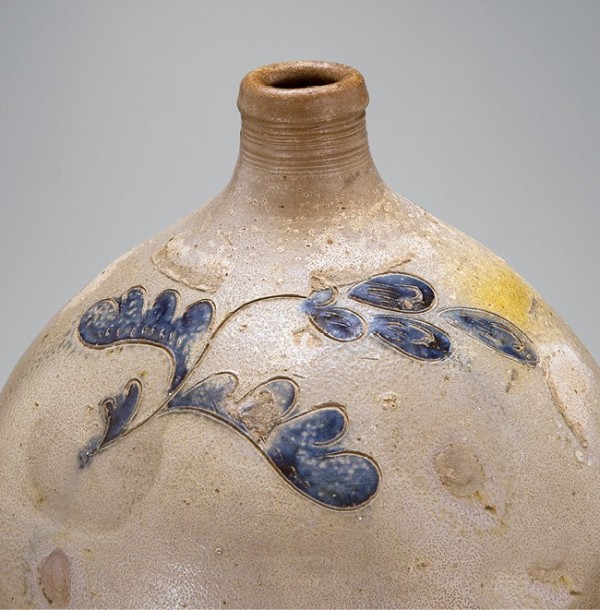
Detail of the incised decoration on the jug illustrated in fig. 13.
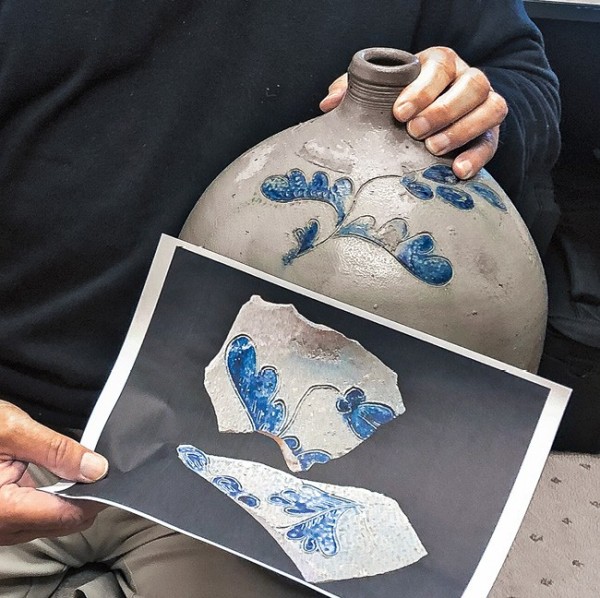
The juxtaposition of the fragments shown in fig. 11 with the jug shown in fig. 13. (Photo, Michelle Erickson.)
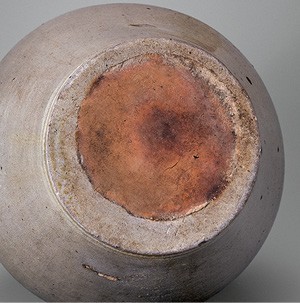
Detail of the base of the jug illustrated in fig. 13. The base shows a scar—the result of being stacked using a “kiln stacker”—that is identical to the marks seen on the bases of other DuVal vessels.

Reverse of the jug illustrated in fig. 13. Note the attachment of the handle to the neck/lip of the jug and the lack of a thumb impression on the lower terminus.
